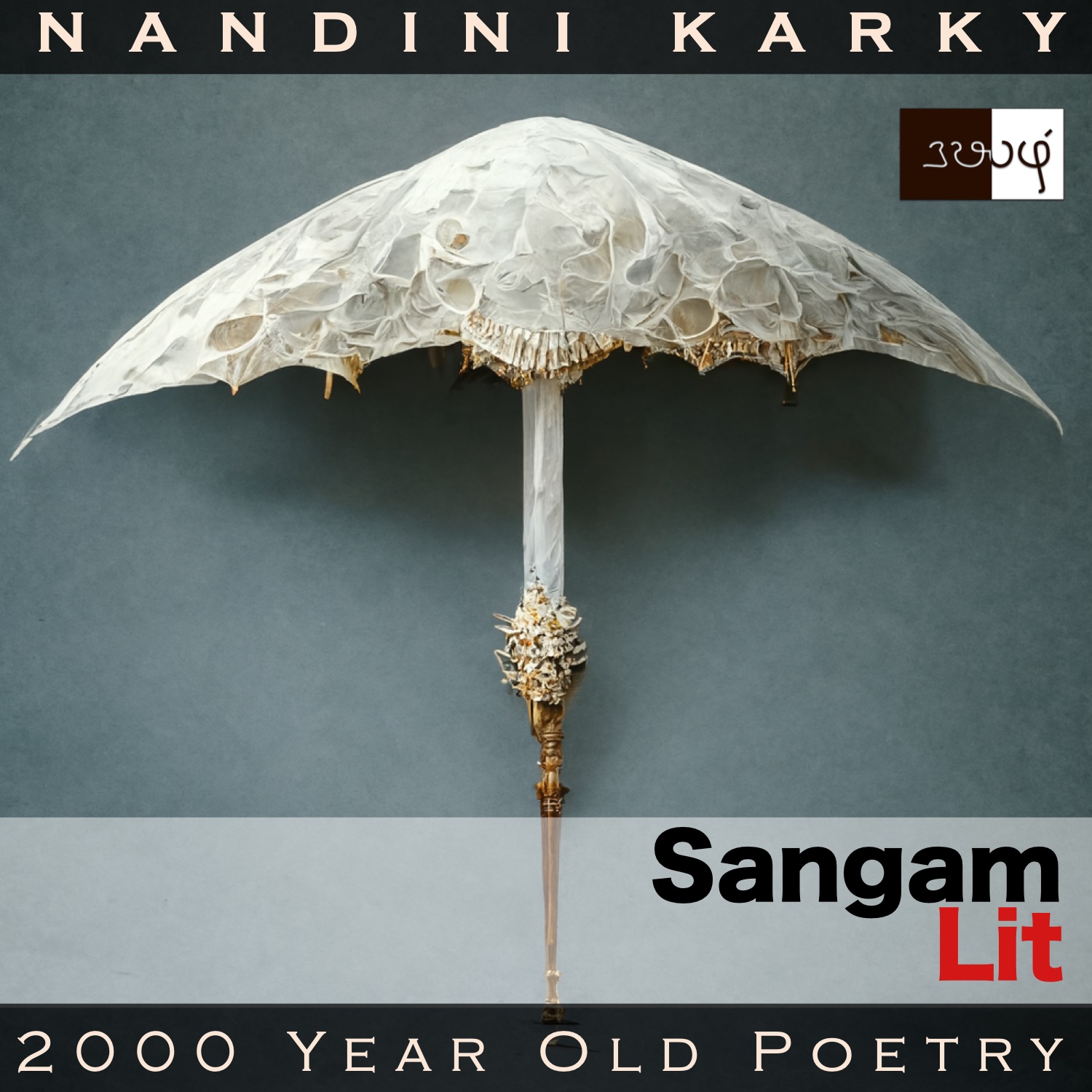Podcast: Play in new window | Download
Subscribe: Apple Podcasts | Spotify | Amazon Music | Android | iHeartRadio | TuneIn | RSS | More
In this episode, we relish a stack of similes that celebrate a king, as depicted in Sangam Literary work, Puranaanooru 60, penned about the Chozha King Kuraapalli Thunjiya Perunthirumaavalavan by the poet Uraiyur Maruthuvan Thaamotharanaar. The verse is situated in the category of ‘Paadan Thinai’ or ‘King’s praise’ and talks in a symbolic manner about the reign of this ruler.

முந்நீர் நாப்பண் திமில் சுடர் போல,
செம்மீன் இமைக்கும் மாக விசும்பின்
உச்சி நின்ற உவவு மதி கண்டு,
கட்சி மஞ்ஞையின் சுரமுதல் சேர்ந்த,
சில் வளை விறலியும், யானும், வல் விரைந்து,
தொழுதனெம் அல்லமோ, பலவே கானல்
கழி உப்பு முகந்து கல் நாடு மடுக்கும்
ஆரைச் சாகாட்டு ஆழ்ச்சி போக்கும்
உரனுடை நோன் பகட்டு அன்ன எம் கோன்,
வலன் இரங்கு முரசின் வாய் வாள் வளவன்,
வெயில் மறைக் கொண்ட உரு கெழு சிறப்பின்
மாலை வெண் குடை ஒக்குமால் எனவே?
A neatly stitched song in tribute to this Chozha king, who was described as having earned the friendship of the contemporary Pandya king in Puranaanooru 58. The poet’s words can be translated as follows:
“Like a lamp in a boat surrounded on all sides by the seas, the red planet flickers on the canopy of the sky. Seeing the glowing moon high upon this sky, in the drylands path, akin to jungle peacocks, the dancing maiden wearing a few bangles and I danced and worshiped, bending low, didn’t we? Akin to a bull with immense strength that drags out of deep pits, wheeled wagons, which carry loads of salt from backwaters to hills, is our king, with an uproarious war-drum and an unfailing sword. We bent low in worship thinking that the full moon in the drylands was the beautiful, garlanded, white umbrella that hides the sun, belonging to this great king of ours!”
Time to delve deeper into the words. The poet begins by talking about a lantern in a boat, and when we start to think this poem is going to narrate a fishing adventure, the verse takes a different turn and soars to the skies to mention the visual parallel of how the red star meaning the planet Mars flickers in the blue sky. Having brought us to the sky, the poet now beckons us to look at the white moon up above, and then he recollects something that happened to him when he was walking on the drylands path with a dancing maiden. When they happened to glance at this white moon then, like peacocks they started dancing in glee and bending low to pray to the moon.
Were these two people moon worshipers? Is that why they are responding so to the sight of the moon? Let’s wait to hear the poet’s explanation. Instead of talking about the moon, the poet launches into a long description about a salt merchant’s bull that pulls wagons of salt all day from the seas to the hills and even mentions how when the wagons get stuck in deep pits on the road, these bulls nudge them out. That dynamic description is only to place in parallel, the strength of the Chozha king to that of this bull! Finally, the poet explains the reason for that joyous dance before the moon, saying that was because the poet thought the moon was the cool, white royal umbrella belonging to this king!
A king’s umbrella is not just an object to keep out the sun but also a symbol of the king’s rule over his subjects, protecting them from all harm and providing the conditions for them to prosper. While the theme of the song may be a simple celebration of a king, those images of a glowing lantern on a boat, a salt-merchant’s bull tugging a wagon and a glowing white umbrella offer striking visuals of an ancient way of life!




Share your thoughts...